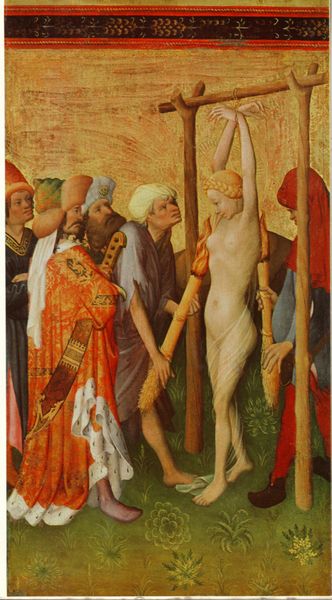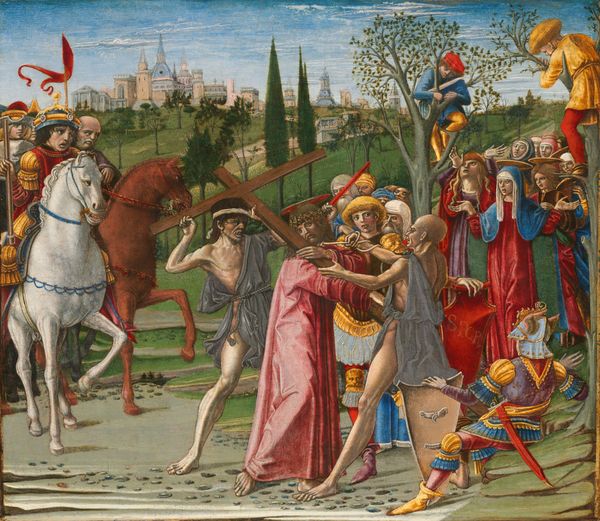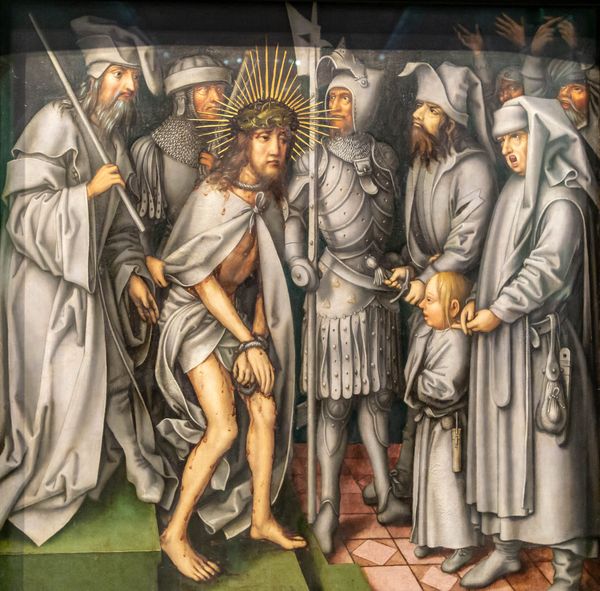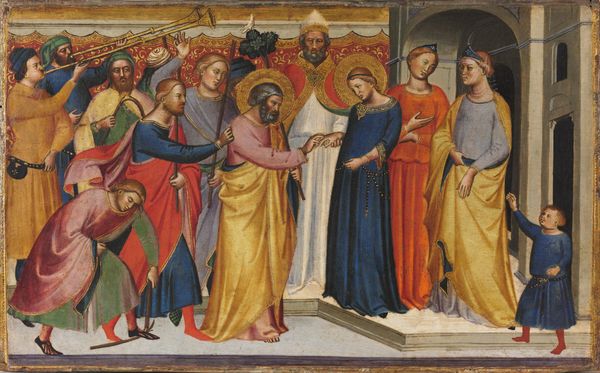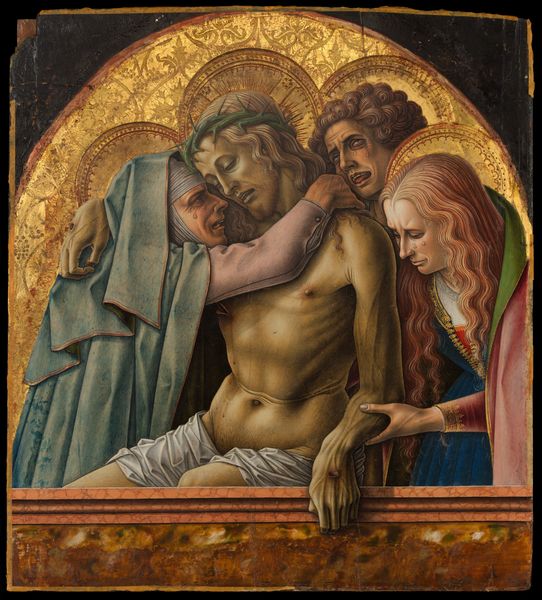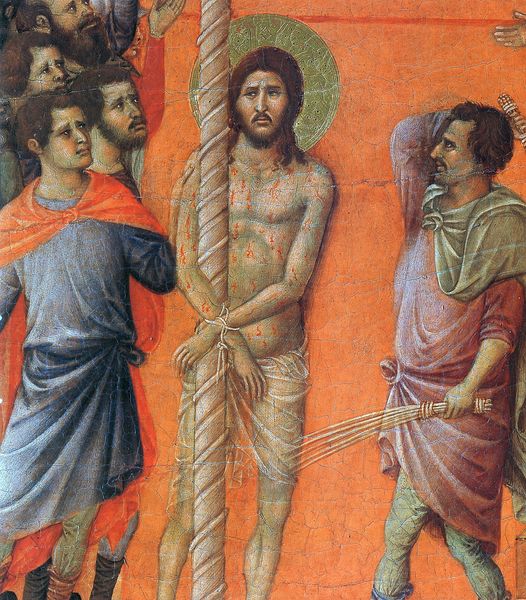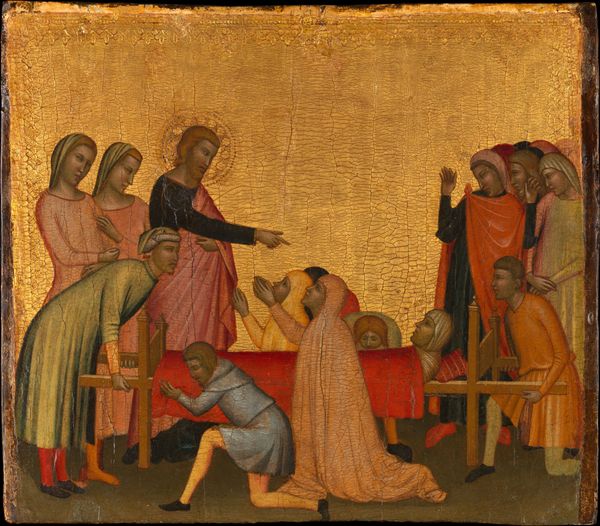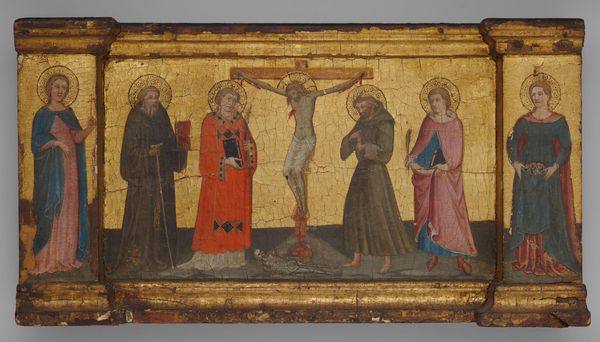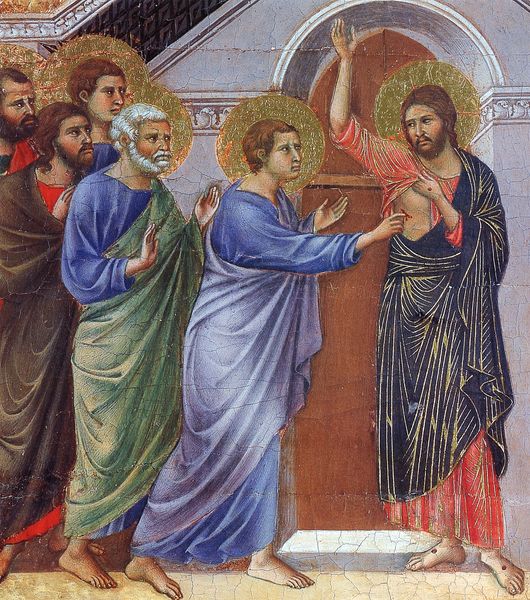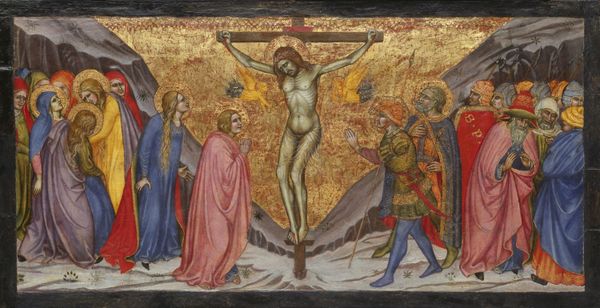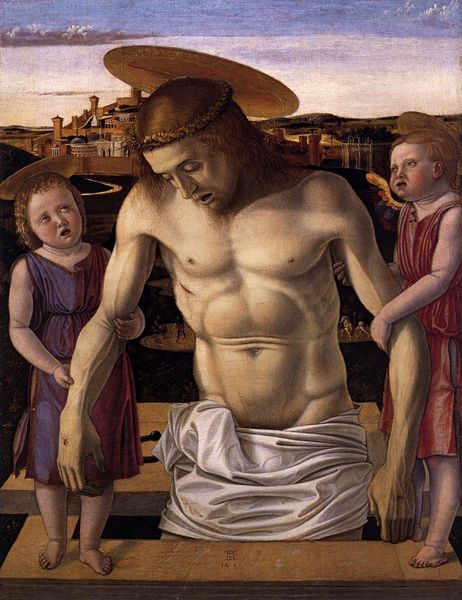
tempera, painting
#
narrative-art
#
tempera
#
painting
#
figuration
#
oil painting
#
coloured pencil
#
history-painting
#
italian-renaissance
Copyright: Public domain
Curator: Let’s take a look at “The Flagellation of Christ,” an Italian Renaissance tempera on panel attributed to Luca di Tommè. What strikes you most when you see it? Editor: The theatricality of the composition immediately jumps out. It's brutal, yet meticulously staged—almost like a tragic performance frozen in time. There is a striking emotional vulnerability conveyed through Christ's posture. It raises so many questions around the justification of state-sponsored violence and oppression. Curator: It certainly is dramatic. Renaissance artists were deeply concerned with representing emotional and spiritual states, often within specific social and theological frameworks. The artist is navigating the symbolic importance of the scene in how it would be read by contemporary audiences within Siena. The narrative conventions carry a heavy weight. Editor: Yes, the work has to be analyzed on the background of patriarchal theologies, how religion impacts socio-cultural realities, and affects women. Who has ownership and access to interpret the narratives in artwork is important as well. Curator: Agreed. Considering the placement of such images within churches and private collections, we see them playing a crucial role in shaping piety and reinforcing hierarchies. Art acted as a powerful tool in delivering cultural norms within its socio-historical setting. Editor: And how these cultural norms justified persecution then, and can subtly continue to do so today. Looking at how Christ's suffering is emphasized and almost aestheticized, how might this affect perceptions of violence against the vulnerable? Curator: These depictions become increasingly naturalistic as the Renaissance progresses, impacting how viewers engaged with religious narratives, so artworks such as this start playing a different role than their predecessors. Editor: So much to consider. Thinking about our role as contemporary viewers, these layers of historical and cultural encoding offer profound, if disquieting, insights into how power operates across centuries. Curator: Indeed, reflecting on these questions can encourage new dialogues around identity, representation and meaning when considering art and social commentary.
Comments
No comments
Be the first to comment and join the conversation on the ultimate creative platform.
